Check out my custom vibration dampener
Tennis Balls
Buyer’s Guide + 12 Best Balls for Performance
We hope you love this article. Just so you know, TennisCompanion may collect a small share of sales from the links on this page to help keep this site running. Learn more.
On the surface, it may seem that all tennis balls are created equal, but look a little closer, and there’s more than meets the eye.
Beyond their complex manufacturing process, there are various types of tennis balls with different materials and construction designed to meet the ever-growing demand of players.
In this guide, I’ll equip you with everything you need to know about this essential piece of tennis equipment, so you know how to choose the ideal tennis balls for your court preference and playing conditions.
I’ll also share some of my favorite tennis balls that I’ve used first-hand to help you narrow your options and ensure a confident purchase.
| Tennis Balls | Type of Ball |
| Wilson US Open | Pressurized |
| Dunlop ATP | Pressurized |
| Slazenger Wimbledon | Pressurized |
| Tecnifibre X-One | Pressurized |
| Penn Tour | Pressurized |
| Wilson Trinity | Pressureless |
| Setpoint Pulp | Pressureless |
| Tretorn Micro X | Pressureless |
| Penn | Pressureless |
| Tourna | Pressureless |
| Wilson US Open | High Altitude |
| Penn Championship | High Altitude |
Article Contents
Click below to jump to a section
Tap below to jump to a section
Brief History of Tennis Balls
Tennis Ball Rules
How Tennis Balls Are Made
What Makes a Good Tennis Ball
Types of Tennis Balls
Men’s vs. Women’s Tennis Balls
Kids Tennis Balls
Tennis Ball Brands
Balls Used at Grand Slams
Best Tennis Balls
Buying Tips
Recycling Tennis Balls
New to TennisCompanion?
Create a free account and explore my latest videos below
A Brief History of Tennis Balls

Some of the oldest tennis balls used to play the earliest forms of the sport were crafted by hand with everyday materials, including leather and wool, wrapped together and tied with rope.
In some cases, the stomach of a goat or sheep would have formed the core of a ball, which, although surprising to many, isn’t a far cry from the cow intestine still used to create natural gut tennis strings today.
As the sport began to mature in the 1870s with the introduction of Lawn Tennis and equipment sold by Major Walter Clopton Wingfield, so did tennis balls, which transitioned to rubber.
The first rubber balls were rudimentary and delivered inconsistent performance. However, it wasn’t too long before John Heathcote, a British sportsman, introduced a two-piece flannel cover sewn over the top for perhaps the closest resemblance to the modern tennis ball.
These days, manufacturers meet stringent criteria set by the International Tennis Federation (ITF) for producing tennis balls, including weight, size, rebound, deformation, and color.
Up until the 1970s, white and black tennis balls were the norm. However, after the introduction of color TV in the late 60s, it became clear that white balls used for televised events like Wimbledon were hard to see.
A study by the ITF suggested yellow was easier to view on color screens, which led to them amending their rules in 1972. The change required all tennis balls to be white or yellow, and it wasn’t before long that all tournaments had adopted the optic yellow color that is now the norm for professional and recreational tennis worldwide.
Tennis Ball Rules

The ITF is the governing body of tennis that sets the rules for the game, which includes tennis racquets and balls. We can break down the rules for tennis balls into two areas.
On-court Ball Use
Regarding on-court use, there are a few simple considerations organizers must make before an event begins.
First, the number of tennis balls that competitors will use for play should be announced in advance, i.e., 2, 3, 4, or 6 balls.
Second, organizers should decide if they will allow ball changes and the frequency if allowed. Ball changes can occur after a pre-determined number of odd games or at the beginning of each set.
In the former scenario, the first change of balls should occur two games earlier to account for the warm-up.
Furthermore, a tie-break counts as a single game for determining when the following ball change should occur, and a ball change should never happen before a tie-break. Instead, if a ball change falls at the beginning of a tie-break, the next ball change should take place at the start of the second game of the next set or the beginning of the set.
Ball Specifications
As you can imagine, the relative consistency in the performance of tennis balls is crucial for competitive play. If the ITF didn’t regulate it, then balls would present a significant x-factor that would make it challenging for players to adapt from one match or tournament to the next.
To that end, the ITF sets specific measurements that tennis balls must meet for play under their official rules. Furthermore, those measurements align with the pace rating or speed of a court. Here’s a table outlining the required specifications for tennis balls.
| Measurement | Type 1 (Fast) | Type 2 (Medium) | Type 3 (Slow) | High Altitude |
| Weight | 56.0 – 59.4 g 1.975 – 2.095 oz |
56.0 – 59.4 g 1.975 – 2.095 oz |
56.0 – 59.4 g 1.975 – 2.095 oz |
56.0 – 59.4 g 1.975 – 2.095 oz |
| Size | 6.54 – 6.86 cm 2.57 – 2.70 in |
6.54 – 6.86 cm 2.57 – 2.70 in |
7.00 – 7.30 cm 2.76 – 2.87 in |
6.54 – 6.86 cm 2.57 – 2.70 in |
| Rebound | 138 – 151 cm 54 – 60 in |
135 – 147 cm 53 – 58 in |
135 – 147 cm 53 – 58 in |
122 – 135 cm 48 – 53 in |
| Forward Deformation | 0.56 – 0.74 cm 0.220 – 0.291 in |
0.56 – 0.74 cm 0.220 – 0.291 in |
0.56 – 0.74 cm 0.220 – 0.291 in |
0.56 – 0.74 cm 0.220 – 0.291 in |
| Return Deformation | 0.74 – 1.08 cm 0.291 – 0.425 in |
0.80 – 1.08 cm 0.315 – 0.425 in |
0.80 – 1.08 cm 0.315 – 0.425 in |
0.80 – 1.08 cm 0.315 – 0.425 in |
| Color | White or Yellow |
White or Yellow |
White or Yellow |
White or Yellow |
Furthermore, when the ITF runs its durability testing for approval, a tennis ball must not exceed the changes in measurements outlined below.
| Measurement | Weight | Rebound | Forward Deformation | Return Deformation |
| Max Change | 0.4 g 0.014 oz |
4 cm 1.6 in |
0.08 cm 0.031 in |
0.10 cm 0.039 in |
It’s worth noting that Type 2 tennis balls are by far the most prevalent, accounting for 185 of the 314 approved tennis balls. Also, unknown to many is that Type 2 balls can be pressurized or pressureless.
Here’s a quick snapshot outlining how many balls the ITF has approved in each category and are in good standing to date.
| Type | Count |
| Type 1 | 3 |
| Type 2 | 185 |
| Type 3 | 0 |
| High Altitude | 13 |
| Red Stage 3 | 28 |
| Orange Stage 2 | 50 |
| Green Stage 1 | 35 |
| Total | 314 |
Of the 314 total approved tennis balls, 214 are pressurized, and 100 are pressureless. Although the pressureless number may appear high, keep in mind that many of the balls in Red Stage 3 for ten and under tennis are pressureless, which is why that number is higher.
Beyond the more detailed measurements or specs, tennis balls must also be colored white or yellow under the ITF’s rules.
How Tennis Balls are Made

On the surface, it may seem like tennis balls are relatively uncomplicated pieces of tennis equipment.
However, despite their unassuming appearance, a tennis balls creation requires a highly detailed and technical manufacturing process. Over the years, brands have continued to make the process as efficient as possible to meet the growing worldwide demand.
Here’s an overview of the steps involved in making tennis balls.
- To start, a unique blend of natural and synthetic rubber is mixed together with a handful of additional proprietary substances for optimal bounce, durability, and performance.
- The rubber blend is mixed, pulverized, and continuously rolled until workers achieve an ideal firm and smooth rubber compound.
- The rubber passes through a machine that forms small rubber plugs or pellets with a precise weight.
- The plugs make their way onto a machine that looks like a cupcake tray and creates half-shells of the tennis balls by heating the rubber to 320 F and applying pressure.
- A machine punches the half-shells out with clean edges, and they’re graded or sanded to a specific height and buffed clean.
- The edges of the half-shells receive a coat of special heat-activated glue or adhesive.
- Moments before a machine combines two half-shells, pressure fills the inside of the ball, followed by applying intense heat and pressure or a process known as vulcanization to seal the ball.
- The ball is then graded and sanded lightly before covering it with glue or adhesive for attaching the felt.
- Meanwhile, a machine cuts a sheet of felt (often a blend of nylon and wool) into pill-shaped pieces.
- Another machine presses stacks of these pieces of felt together tightly so that only the edges are exposed and then dips them into a white latex glue bath that will act as an adhesive.
- A machine or factory worker applies two pieces of felt around a rubber ball, which begins to take its final shape.
- Balls with their new felt cover transfer into a machine that heats and applies high pressure to bond the felt cover firmly to the inner rubber ball.
- A quick tumble that sometimes involves steam fluffs up the felt of the balls for optimal performance.
- Balls run through quality control to check for imperfections, and workers trim excess latex that may be present along the seam.
- A machine stamps or prints the logo onto each ball.
- Finally, the balls are canned and pressurized equal to the internal pressure of the ball to ensure lasting freshness until opened.
As you can see, it’s a rather detailed manufacturing process that requires thoughtful engineering for consistent production that meets the ITF’s standards and rules for tennis balls used in competition.
What Makes a Good Tennis Ball

In many ways, the tennis balls a player chooses or prefers are a personal preference. Of course, price is also a consideration.
However, there are various factors that you can use to assess the quality of a given ball. Perhaps the three most important attributes are:
- Durability: A quality tennis ball will have premium felt that stands up to the constant beating of the court and strings of a racquet and doesn’t break down quickly.
- Long-Lasting Bounce: Over time, a tennis ball loses its pressure and doesn’t bounce as well. The best tennis balls retain their bounce over an extended period.
- Consistent Performance: When you buy a can of tennis balls, you should expect near identical performance from the same brand and type of ball time after time.
Luckily, most tennis balls, especially those from reputable tennis brands, undergo stringent testing administered by the ITF to ensure baseline quality for the above three characteristics.
As a result, unless you’re buying an unfamiliar brand that the ITF does not approve of, then you should rarely have to worry about quality. Of course, you could always check the brand against the ITF’s approved balls.
Instead, you’ll need to decide on the type of tennis ball you prefer or the one that’s best-suited for your playing conditions, which we’ll cover in the next section.
Types of Tennis Balls & Felt

Although tracking down a quality tennis ball is made more accessible due to the ITFs testing, there are still some decisions you’ll need to make to ensure you’re using the best option for your playing conditions.
First, you’ll need to decide on the type of tennis ball you prefer. Here’s an overview of the three main categories.
Pressurized
The most common type of tennis ball that you’ll find sold by most retailers and used for virtually all competitive play is pressurized.
A machine immediately adds nitrogen or a similar gas inside the ball before sealing two rubber halves during the manufacturing process. The pressure is, in part, what gives a tennis ball its consistent bounce.
Tennis balls maintain their pressure through storage in cans that a machine pressurizes equal to that of the ball, which is the primary reason a tennis ball slowly loses its pressure after being opened.
Many players prefer pressurized tennis balls for their superior bounce and lighter weight. Plus, they’re the type of balls used in most competitions, so using them during practice ensures consistency.
However, the biggest downfall to pressurized tennis balls is their durability and lifespan, which are significantly less than pressureless.
Pressureless
As the name suggests, pressureless tennis balls are not pressurized, which affords them a significant advantage in that their performance does not decline due to lack of pressure.
Instead, their design enables sufficient bounce and performance. As a result, pressureless tennis balls tend to be more durable and long-lasting than pressurized, making them terrific options for practice or periodic recreational play where you don’t need a fresh can every time.
Helpful Tip
Due to their extra durability and long-lasting performance, pressureless tennis balls are ideal for ball machines, which tend to put quite a bit of stress on the ball during use.
It’s worth noting that most pressureless tennis balls come in buckets or bags rather than cans because manufacturers don’t need to maintain consistent internal pressure.
Pressureless tennis balls turn some players off because they’re not the same as the ones they use in competition. Furthermore, they tend to be slightly heavier and less lively, which many players don’t prefer.
High Altitude
If you’re playing tennis at a high altitude, i.e., 4,000 ft (1,219 m) above sea level, then you’ll want to use high-altitude tennis balls to ensure the bounce is appropriate for those conditions.
At higher altitudes, the air is thinner, so a standard pressurized tennis ball will fly faster and bounce higher, which is less than ideal and makes it difficult to adjust if you’re used to a ball’s typical bounce.
Some manufacturers sell high-altitude tennis balls with a lower internal pressure to accommodate the elevation change, which results in a hitting experience that’s more consistent with the bounce of a typical pressurized tennis ball at lower elevations.
As an alternative, some players will use pressureless tennis balls that work sufficiently at all altitudes. However, if the balls come from a warehouse or store at a lower elevation, the internal pressure may take a short period to acclimate to the higher elevation.
Tennis Ball Felt
When you’re purchasing a can of tennis balls, one of the decisions you’ll need to make is the type of felt or durability required.
Luckily, deciding is pretty straightforward as it’s common for players to base their decision on the type of court surface their playing.
Regular Duty
If you play on clay courts, carpet, or turf, regular duty balls, which have a softer, thinner, and less durable felt, work well because those surfaces are gentler on the ball and more forgiving.
Extra Duty
If you’re playing on hard courts, which tend to be abrasive, you’ll most likely opt for extra-duty tennis balls that have thicker, more durable felt to withstand the pounding of the harsh surface.
Grass Court
Although grass is a soft surface for playing tennis, it tends to leave stain marks on tennis balls. Furthermore, grass often retains moisture, which a tennis ball can absorb, leading to sub-par performance.
As a result, a grass court tennis ball features regular duty felt with a stain and sometimes even a water-resistant finish. These days, many high-quality tennis balls offer these features without explicitly stating them.
Addition Considerations
Although the type of court you’re playing tennis on is the most straightforward way to select the ideal felt for your tennis ball, many players develop a felt preference based on performance.
For example, if you hit hard and with lots of topspin, a tennis ball will be more likely to wear quickly and fluff up, reducing its performance. As a result, you may be more inclined to opt for extra duty regardless of the surface and typical for many players.
Other factors, including feel, bounce, and longevity, play a role and are worth considering as you have the opportunity to try various tennis balls.
Men’s vs. Women’s Tennis Balls

You may have heard of some scenarios where men on the pro tour use different tennis balls than women. In some cases, it’s true.
Although tennis ball selection or use generally has no bearing on gender, i.e., tennis balls aren’t designed with a specific gender in mind, some tournaments use different balls for the ATP and WTA tours.
Perhaps the most prominent instance of an event using different balls for men and women is at the US Open. The tournament supplies players on the ATP tour with Wilson Extra Duty tennis balls and the WTA tour with Wilson Regular Duty tennis balls.
The same is true for many other tournaments, including the Australian Open, Miami Open, and Canadian Open, to name a few. However, the brand of tennis balls may be different based purely on sponsorship.
The logic behind the difference in balls for men vs. women lies in the felt and an attempt to speed up the women’s game while keeping it as slow as possible for men.
Regular duty balls have less felt and therefore fluff up less and fly slightly faster, while extra duty balls have more felt and fluff up more, causing them to travel slower.
At the US Open, the tell-tail sign of the different balls is the ink used, black for men and red for women. Other than that, they’re difficult to distinguish by the naked eye.
Kids Tennis Balls
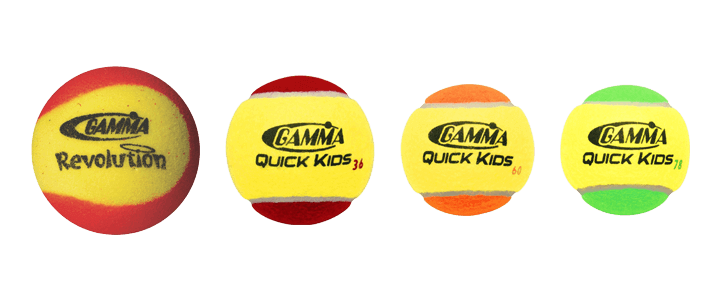
For many of us growing up, the notion of kid’s tennis balls was non-existent. Except for kid’s tennis racquets, children learned with the same tennis balls, court, and net size as adults, which was less than ideal.
Recognizing the deficiencies, the United States Tennis Association (USTA) introduced 10 and Under Tennis in 2010, adapting the court and equipment for children to make it easier to learn and progress.
In addition to racquet, court, and net size differences introduced with 10 and Under Tennis, kids also use various tennis balls that align with their age and skill development.
Here’s a table outline the different tennis balls kids use at the four stages of 10 and Under Tennis.
| Stage | Color | Material | Size | Compression |
| Red Stage 1 | Red & Yellow | Foam | Largest | None |
| Red Stage 2 | Red & Yellow | Rubber & Felt | 15% larger than standard | 25% of standard |
| Orange | Orange & Yellow | Rubber & Felt | Standard | 50% of standard |
| Green | Green & Yellow | Rubber & Felt | Standard | 75% of standard |
Children start with larger felt balls that move slower and progress to smaller low-pressure balls that move quicker and bounce higher. At each stage, the balls are color-coded for easy recognition.
Of course, there is nothing fundamentally wrong with kids using the same tennis balls that adults use, and it’s still common worldwide.
However, if you enroll your child in lessons, they’ll likely learn under the 10 and Under Tennis program or something similar. For example, the Lawn Tennis Association’s (LTA’s) Youth Program follows a similar learning path.
Tennis Ball Brands
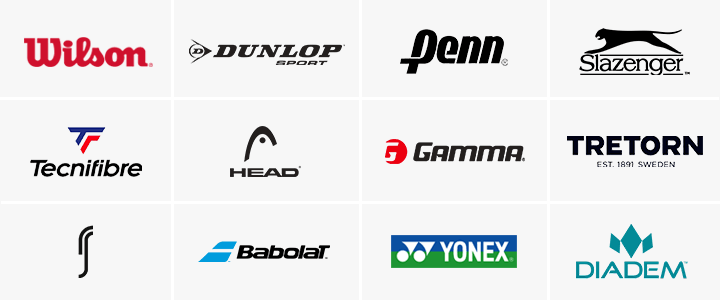
If you’ve ever purchased a can of tennis balls, there’s a high likelihood it’s from one of the top manufacturers, including Penn, Wilson, or Dunlop.
However, as prevalent as these brands are, many other tennis ball brands offer exceptional products worth considering.
Below, we’ve included a list of the different brands that have received ITF approval for at least one of their tennis balls.
To make the list easier to review, I’ve organized the tennis balls into two tiers based on their prominence in the industry.
Tier 1
- Babolat
- Diadem
- Dunlop
- Gamma
- Head
- Penn
- RS
- Slazenger
- Tecnifibre
- Tretorn
- Wilson
- Yonex
The following tennis ball brands aren’t necessarily of lesser quality. Instead, they’re not as popular or easy to find.
Tier 2
- Artengo
- Balls unlimited
- Bridgestone
- Compass
- Drop Shot
- Heroe’s
- HTV
- I Love Beach Tennis
- INNI
- Kona
- Max Beach Tennis Tour
- Maxed Elite
- Mormaii
- Nassau
- Nox
- Odea
- Prince
- Pro Kennex
- Pro Touch
- Pro’s Pro
- Quicksand
- S Ball
- Sandever
- Singa
- Snauwaert
- Spin
- Srixon
- Star Match Point
- SWAJ
- Teloon
- Tennis Point
- Tennis Sport
- Torneo
- Track and Field
- Turquoise
- Volkl
It’s also worth noting that any of the brands on the Tier 2 list only offer kids or beach tennis balls.
Balls Used at the Grand Slam Events
The majors or Grand Slam events are the most significant in tennis, including the Australian Open, Wimbledon, French Open, and US Open.
As a result, they attract some of the most significant sponsorships, which for each includes an official tennis ball.
As a more general note, Grand Slam events supply players with six tennis balls at the start of each match during the warm-up, which the umpire switches out after the seventh game. For the remainder of each match, the umpire swaps the balls out after every nine games.
Australian Open

The Australian Open is the first Grand Slam of the year, which kicks off in Melbourne at the end of January.
In 2018, the tournament inked an agreement with Dunlop to supply balls for the next five years or until 2022. Before Dunlop, the Australian Open was using Wilson tennis balls since 2006.
During the tournament, players will use roughly 48,000 tennis balls. If you’re looking to pick up a can of these balls, you’ll want to track down the Dunlop Australian Open XD tennis balls.
Wimbledon

Arguably the sport’s most prestigious event, Wimbledon has a long-standing history using Slazenger tennis balls which started in 1902.
Every year, more than 54,000 tennis balls are packaged and prepared for use at Wimbledon, which kicks off at the end of June. For instance, in 2018, the tournament used 54,250 tennis balls.
If you’re looking to pick up a can, you’ll want to search for the Slazenger Wimbledon Ball, which is commonly sold in fours but are available in cans of three in specific locations.
French Open

Since 2011, the French Open used tennis balls from French company Babolat, but in 2020 they switched to Wilson Tennis Balls. Before Babolat, Dunlop was the official supplier.
It’s a five-year agreement between the French Open and Wilson, so it will be interesting to see if the two retain their partnership or choose to part ways in the coming years.
According to a promotional video released by Wilson and the French Open, a Roland-Garros finalist hits an average of 12,000 balls throughout the tournament. Furthermore, the French Open uses more than 60,000 balls every year during the event.
US Open

Up until 1975, the US Open took place on grass courts. However, the tournament briefly switched to clay until 1977 and finally landed on hard courts in 1978. During their transition to hard courts, they signed Wilson as their official supplier of tennis balls.
Today, the partnership continues with Wilson supplying their extra and regular duty tennis balls for the tournament. In total, Wilson provides roughly 70,000 tennis balls per year.
Best Tennis Balls
As we’ve covered, there is a wide range of tennis balls available, making it tricky to narrow down the highest quality options.
To help, we’ve organized our favorite pressurized, pressureless, and high-altitude tennis balls that we’ve had first-hand experience using.
Pressurized
There are considerably more options for pressurized tennis balls, but the following selection stands out from the crowd with excellent all-around performance that’s consistent time after time.
Wilson US Open Extra Duty

The Wilson US Open Extra Duty tennis ball is a classic, and the pro tour has been using them in Flushing Meadows since 1978.
These are my top pick and one of my favorite all-around balls, which deliver exceptional consistency and durability with premium felt that stands up to the demands of the most abrasive hard court surfaces.
In particular, I’ve found these balls to perform well in various climates, especially humid conditions where others tend to fluff up excessively.
It’s worth noting that I find these balls to play a bit slower than others, which I find is a welcome tradeoff for added durability.
| Type | 2 |
| Manufactured | Thailand |
| Balls Per Can | 3 |
| ITF Approved | Yes |
| Felt | Extra Duty |
| Ideal Court | Hard |
Dunlop ATP Championship Extra Duty

In 2019, Dunlop became the official ball for the ATP, and as a result, it’s one of the most widely used on tour, including the Australian Open.
Like Wilson’s US Open offering, these are premium tennis balls that offer consistent performance and an excellent feel using Dunlop’s highly visible and durable HD Pro Cloth and HD Pro Core.
The one downside I’ve found is that they don’t seem to handle humid conditions super well, but they’re hard to beat in dryer climates.
As far as pace, I find these balls to play at an ideal mid-range speed, which is well suited for hard court play.
| Type | 2 |
| Manufactured | Philippines |
| Balls Per Can | 3 or 4 |
| ITF Approved | Yes |
| Felt | Extra Duty |
| Ideal Court | Hard |
Slazenger Wimbledon

The official ball at Wimbledon since 1902, the Wimbledon Ball from Slazenger, is an excellent high-performance option that’s one of the best I’ve ever used right out of the can.
Their felt is tighter, and I find it less durable than others, making them ideal for softer grass and clay courts.
One of the Wimbledon Ball’s unique features is Hydro Guard, which according to Slazenger, repels up to 70% more water than a standard ball.
Like any tennis ball, they’re not going to perform well soaking wet, but they’re a great option if you play in wetter climates where rain comes and goes frequently, and puddles are a regular occurrence.
| Type | 2 |
| Manufactured | Philippines |
| Balls Per Can | 3 or 4 |
| ITF Approved | Yes |
| Felt | Regular Duty |
| Ideal Court | Grass, Clay |
Tecnifibre X-One

Although it might not be the first name that comes to mind for tennis balls, Tecnifibre’s X-One is an exceptional performer.
After a short warm-up, the ball’s long-lasting felt achieves an ideal fluff, which remains consistent for the life of the balls.
Currently, the ATP uses these balls at the ATP Marseille and Rotterdam, which are 250 and 500 level tournaments, respectively.
Unfortunately, these are some of the more difficult tennis balls to come by in the United States, but there are a few online retailers such as Do It Tennis that carry them if you’re up for giving them a try.
| Type | 2 |
| Manufactured | Thailand |
| Balls Per Can | 3 or 4 |
| ITF Approved | Yes |
| Felt | Extra Duty |
| Ideal Court | Hard |
Penn Tour

No tennis ball is more ubiquitous than the Penn Championship Extra Duty in America, which offers excellent performance at an affordable price.
From Amazon to Walmart, Costco, and you’re local clubs, you can pick these tennis balls up virtually anywhere in the United States, and they’ve built a solid reputation among competitive and recreational players.
However, a step up from their Championship balls, you’ll find their premium Tour tennis balls, which deliver even better performance.
These balls feature Penn’s LongPlay felt for added durability and longevity and their Smart Optik color, which improves visibility by up to 19% compared to your standard ball.
I’ve hit with their Championship tennis balls probably more than any other, and one of the biggest knocks on them is their ability to hold bounce for an extended period.
However, the Penn Tour tennis balls pick up where the Championship leaves off for a longer-lasting performance that’s one of the best.
| Type | 2 |
| Manufactured | Argentina |
| Balls Per Can | 3 or 4 |
| ITF Approved | Yes |
| Felt | Extra Duty |
| Ideal Court | Hard |
Pressureless
Although they’re not typically the first choice for most players, pressureless tennis balls are an excellent option to help you get more life out of your tennis balls, especially for practice or recreational play.
Wilson Trinity

In 2019, Wilson unveiled the Trinity tennis ball, which emphasizes performance and sustainability.
According to Wilson, the ball’s Engage Core uses an innovative plastomer or rubber and plastic material that weighs less and is thicker, resulting in 4 times longer performance than a standard core.
On the ball’s outside, you’ll find STR Felt, which has a unique flex for enhanced performance. The net result is what I’ve found to be a ball that offers exceptional feel that raises the game for pressureless.
The Wilson Trinity balls come in a 100% recyclable paper package vs. the standard plastic tube to help reduce their environmental impact. Furthermore, five percent of profits from these balls go straight to Wilson’s global sustainability efforts.
| Type | 2 |
| Manufactured | Thailand |
| Count | 3 or 72 |
| ITF Approved | Yes |
| Felt | Extra Duty |
| Ideal Court | Hard |
Setpoint Pulp
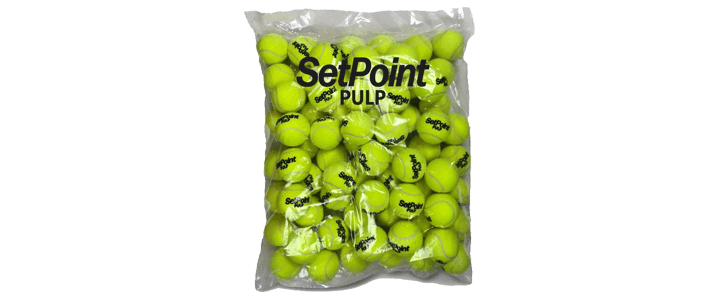
Setpoint Pulp is some of the most durable and long-lasting pressureless tennis balls on the market and one of my top picks for ball machines.
Although pressureless balls work well under any conditions, they need to be extra durable for consistent, accurate placement while standing up to the beating they teak when using them with a ball machine.
They’re lively, deliver a consistent bounce over a long period, and have a highly durable felt that keeps them going for months on end. I find their performance improves after a session or two of hitting.
Spinfire, which makes ball machines, sells these, and they’re some of my favorite on the market.
| Type | 2 |
| Manufactured | Unknown |
| Count | 72 |
| ITF Approved | No |
| Felt | Extra Duty |
| Ideal Court | Hard |
Tretorn Micro X

Another high-quality option for pressureless tennis balls comes from Tretorn, the recommended tennis ball for Lobster ball machines.
A Swedish company, Tretorn might be better known for its rubber boots, shoes, and apparel. However, with their early knowledge in rubber making and vulcanization, they began producing tennis balls in 1902.
Fast forward to 1955, and they launched their revolutionary pressureless tennis ball, which they iterated upon many times and eventually came up with their Micro X ball.
It’s a unique pressureless tennis ball because it contains a smooth white powder or micro cells that help it retain its bounce and longevity.
I’ve used these balls on several occasions, including with a ball machine, and they’re fantastic. However, the biggest drawback is their weight.
| Type | 2 |
| Manufactured | Thailand |
| Count | 3 or 72 |
| ITF Approved | Yes |
| Felt | Extra Duty |
| Ideal Court | Hard |
Penn
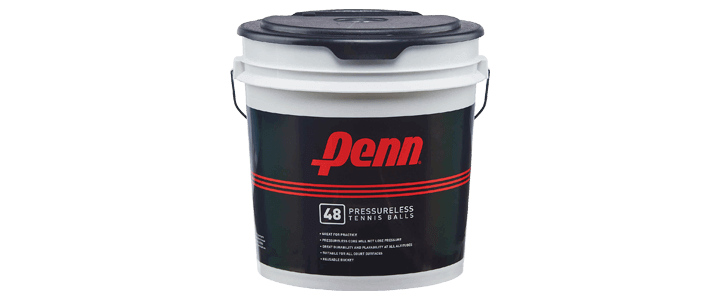
One of the most popular options for pressureless balls is from Penn, which you can typically purchase as a bucket of 48 or a bag of 12.
They’re excellent long-lasting tennis balls that work well for training and are an ideal investment if you’re looking to save some money.
On occasion, I have come across a handful of defective balls, but generally, it’s not an issue and shouldn’t be cause for concern.
Oddly enough, due to their durability and cost, they’re a popular option for dog owners who are looking for balls that last longer.
| Type | 2 |
| Manufactured | China |
| Count | 12 or 48 |
| ITF Approved | Yes |
| Felt | Extra Duty |
| Ideal Court | Hard |
Tourna
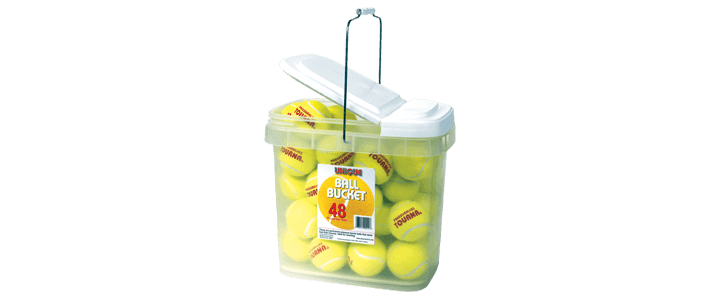
Tourna makes a wide range of quality tennis products, including pressureless tennis balls.
We wouldn’t consider them a premium tennis ball, but they’re a reliable option for players looking for something a bit less expensive.
One of the nice parts about Tourna’s tennis balls is that you can purchase them in various quantities depending on your needs or preference.
They’re also relatively easy to track down through a variety of retailers.
| Type | 2 |
| Manufactured | Unknown |
| Balls Per Can | 3, 12, 18, 45, 48, 50, 60 |
| ITF Approved | No |
| Felt | Extra Duty |
| Ideal Court | Hard |
High Altitude
Options are somewhat limited when it comes to high-altitude tennis balls, but they’re well worth the investment if you’re playing above 4,000 ft (1,219 m) to ensure a proper bounce for your environment.
Wilson US Open

One our my favorite pressurized tennis ball is also available as a high-altitude option with extra duty felt.
Considering high altitude balls are a bit harder to come by, these are easily my favorite pick as they feature the same great quality as their standard balls, simply pressurized for play above 3,500 ft (1,067 m).
As you’d expect from Wilson, these balls are ITF-approved, and they’re an excellent choice for players of all skill levels.
I’ve had an opportunity to hit with these in Denver on a few occasions, and they perform as expected.
| Type | High Altitude |
| Manufactured | Thailand |
| Balls Per Can | 3 |
| ITF Approved | Yes |
| Felt | Extra Duty |
| Ideal Court | Hard |
Penn Championship

Like Wilson, Penn offers their ever-popular Championship tennis balls in a high-altitude option, which is another fantastic choice.
Between the two, they’re more affordable, so it’s great for players to have options. As you might expect, they feature the same great performance as their standard pressurized tennis balls.
However, they also have the identical downside: their longevity could be better, so it’s a cost-benefit tradeoff.
| Type | High Altitude |
| Manufactured | China |
| Balls Per Can | 3 |
| ITF Approved | No |
| Felt | Extra Duty |
| Ideal Court | Hard |
Buying Tips
Hopefully, this guide has helped you gain a handle on tennis balls and what to expect when buying them. However, to help you make the best decision, I have a few tips worth contemplating.
Consider Buying Bulk
If you’re into tennis, then you’re going to go through a lot of tennis balls, especially if you’re using pressurized balls.
With that in mind, you can save a considerable amount of time and money over the long term if you buy tennis balls in bulk.
Regarding time, you don’t have to stop at the store or plan to order them regularly. However, for most people, cost is a significant consideration.
Depending on the type of ball and where you’re making your purchase, I’ve found I can save upwards of a dollar per can buying bulk.
With that said, there are downsides. If you buy low-quality balls in bulk, you’re going to be disappointed, and you’ll likely want to work through all of them before you buy some new ones.
Furthermore, if you buy in bulk, you’re stuck with using one kind of ball for an extended period. For most, that’s not an issue, especially if you’re buying tennis balls you love to play with, but worth mentioning.
Freshness Matters
When buying pressurized tennis balls, you might assume that they’ll last for years unopened. Unfortunately, that’s not the case.
In my experience, tennis balls have a shelf life of roughly a year before they begin to underperform, resulting from the can slowly losing pressure.
With that in mind, it pays to purchase your tennis balls from companies that are regularly selling tennis balls to ensure the ones you’re buying haven’t been sitting on the shelf for too long.
It’s also worth considering if you’re buying in bulk. If you’re not going to go through a case of tennis balls in a year, then you’re likely going to be better off buying in smaller batches or one can at a time.
Try a Tennis Ball Saver
For many, the idea of a tennis ball saver is somewhat gimmicky. Can a simple plastic tube help keep tennis balls fresh or bring old tennis balls back to life? In my experience, yes, they work great.
Tennis ball savers store up to three tennis balls and then compress air within the container to 14 PSI, the original pressure of a fresh tennis ball. Doing so prevents the tennis ball from losing its internal pressure while also repressurizing a ball slowly over time.
There are three popular models:
All three use a similar design and are worth considering if you play frequently and want to save some money on balls.
Don’t Write Off Pressureless
Many players are only familiar with pressurized tennis balls or have used them for a long time, so never even consider using pressureless.
Although they offer a slightly different hitting experience, pressureless tennis balls are an excellent option to save money if you’re playing casually, for fun, or for exercise.
I’ve found some of the higher quality pressureless tennis balls to offer excellent performance at a great price, which far exceeds the lifespan of any pressurized tennis ball.
Yes, you’ll have to make some slight adjustments if you’re going back and forth between balls, but they’re well worth testing out.
The Number Doesn’t Matter
At some point, you may have noticed that most tennis balls have numbers. Usually, they’ll come labeled with a 1, 2, 3, or 4.
Despite the misconceptions that these numbers represent the type of ball, bounce, or other performance characteristics, they allow you to distinguish your balls from other players on adjacent courts.
It’s common for tennis courts not to have dividers separating one court from another, which means it’s inevitable that someone’s tennis ball is going to roll onto the wrong court inadvertently.
When that happens, you can easily distinguish your balls simply by checking the number that you’re using.
Recycling Tennis Balls
Some organizations estimate that over 125 million tennis balls make their way to landfills in the US alone every year. It’s a staggering number that’s even more substantial when you consider tennis worldwide.
If you then consider that it can take up to 400 years for the materials used to create tennis balls to decompose and it’s a legitimate issue.
Fortunately, there are ways to do your part and recycle tennis balls. To start, you’re local club or tennis shop may have a recycling box on hand where you can deposit your balls.
If not, you can work with one of many organizations to send your used tennis balls to them for recycling. Here are two popular options:
- RecycleBalls.org
- Rebounces.com
Alternatively, you can consider repurposing your used tennis balls. Here are a few ideas for using your old tennis balls.
- Walkers: You can cut and place tennis balls on the bottom of walkers for the elderly, people with disabilities, or injured. Doing so helps the walker move smoothly over many surfaces while also preventing a scraping or scratching noise.
- Desks: Many teachers will apply tennis balls to the feet of desks for their children, so they don’t make any noise when moved.
- Dogs: Everyone knows dogs love tennis balls, so instead of tossing them in the trash, let your dog play with them or save them for a friend with dogs so they can enjoy them.
Regardless of what recycling method you choose, it’s a worthy endeavor to help keep them from landfills.
Wrapping Up
Whether you’re new to tennis or rediscovering one of the game’s essential pieces of equipment, I hope you found this guide insightful.
Regardless of your experience, I’d encourage you to explore the many available options and experiment with a handful to feel the difference first-hand and find one you prefer.
It’s relatively inexpensive to test and fun to try different options. You may even find a less expensive alternative that delivers adequate performance for your needs, which can help you save money in the long run.
If you have any questions, please don’t hesitate to post a comment in the section below – I’d love to hear from you!
Home > Gear > Accessories > Tennis Balls
Play Better Tennis
Improve your game alongside our community of tennis players
Why join?
Discussion Boards
Join the conversation with other members of the community.
5 Point Friday
Read our weekly recap of the 5 most interesting things we dig up in tennis.
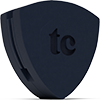
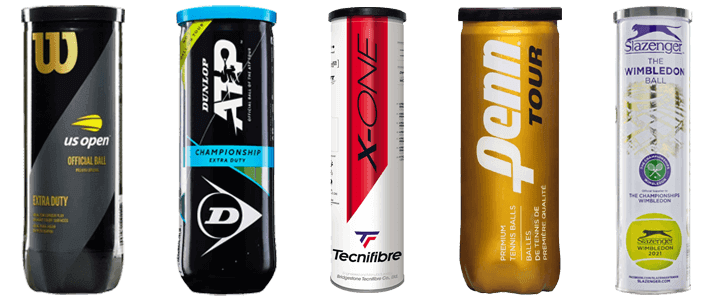

Leave a Reply
Want to join the discussion?Feel free to contribute!